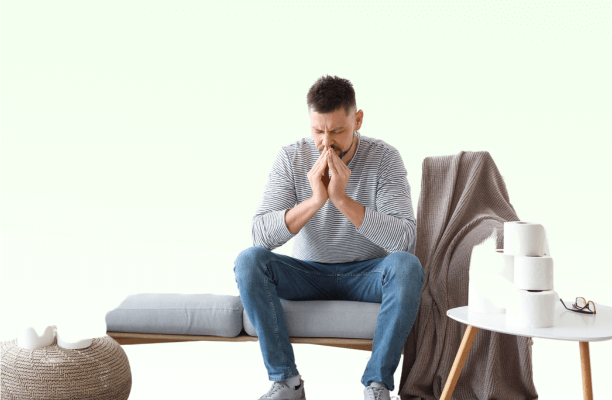Hoarding Disorder Treatment: Hoarding disorder is a complex mental health condition characterized by persistent difficulty discarding or parting with possessions, regardless of their actual value.
This disorder can lead to significant distress and impairment, affecting various aspects of an individual’s life, including their physical health, social interactions, and overall well-being.
In this comprehensive article, we will delve into the diagnosis and treatment of hoarding disorder, providing a detailed overview to better understand and address this challenging condition.
Understanding Hoarding Disorder
Hoarding disorder is a complex psychological condition characterized by persistent difficulty in discarding or parting with possessions, regardless of their actual value. This behavior leads to the accumulation of items, often resulting in cluttered living spaces that can become unmanageable and unsafe.
Symptoms and Behaviors Associated with Hoarding
Individuals with hoarding disorder typically exhibit a range of symptoms and behaviors, including:
- Persistent difficulty discarding items: Even those with little or no value.
- Excessive acquisition: Continuously acquiring items that are not needed or for which there is no space.
- Cluttered living areas: Spaces become so filled with possessions that they are no longer usable for their intended purposes.
- Distress or impairment: Significant distress or impairment in social, occupational, or other important areas of functioning.
- Indecisiveness: Difficulty making decisions about what to keep or discard.
- Procrastination: Delaying tasks, particularly those related to organizing or discarding items.
- Avoidance: Avoiding situations that involve discarding items or organizing possessions.
- Sentimental attachment: Strong emotional attachment to possessions, often with the belief that they might be useful or valuable in the future.
Statistics and Prevalence of Hoarding Disorder
Hoarding disorder is more common than many people realize. According to various studies:
- Approximately 2-6% of the population is affected by hoarding disorder.
- It is equally prevalent among men and women.
- Hoarding behaviors typically begin in adolescence, but the average age of individuals seeking treatment is around 50.
- The prevalence of hoarding disorder tends to increase with age.
The Impact of Hoarding on Individuals and Their Families
The effects of hoarding disorder extend beyond the individual to impact their families and communities. Key impacts include:
- Health and safety risks: Cluttered living spaces can pose significant health and safety hazards, including fire risks, falls, and unsanitary conditions.
- Emotional distress: Individuals with hoarding disorder often experience significant emotional distress, anxiety, and depression.
- Strained relationships: Hoarding can lead to strained or broken relationships with family members and friends, who may feel frustrated or helpless.
- Financial difficulties: The cost of acquiring items and potentially needing to rent storage space can lead to financial strain.
- Legal issues: In extreme cases, hoarding can result in eviction or legal action due to code violations or complaints from neighbors.
However, understanding hoarding disorder is crucial for providing effective support and interventions for those affected. Early recognition and treatment can help mitigate the severe consequences associated with this challenging condition.
Diagnosis of Hoarding Disorder
Here’s a comprehensive look at how hoarding disorder is diagnosed, the involvement of mental health professionals, and common co-occurring conditions.
Methods of Diagnosing Hoarding Disorder
The diagnosis of hoarding disorder involves several steps and criteria based on the guidelines provided by the Diagnostic and Statistical Manual of Mental Disorders (DSM-5). The key methods include:
- Clinical Evaluation: A detailed interview with a mental health professional, focusing on the individual’s emotional attachment to possessions, the clutter’s impact on living spaces, and the distress caused by thoughts of discarding items.
- Observation of Living Conditions: Often, professionals might visit the individual’s home to observe the extent of clutter and its interference with daily living.
- Use of Assessment Scales: Tools such as the Hoarding Rating Scale (HRS) can be used to quantify the severity of the hoarding behavior and its impact on functioning.
- Interviews with Family or Friends: Input from close contacts can help provide a more complete picture of the individual’s behaviors and the onset of hoarding tendencies.
Role of Mental Health Professionals
Mental health professionals play a crucial role in the diagnosis and treatment of hoarding disorder. Their responsibilities include:
- Assessment: Psychiatrists, psychologists, and clinical social workers assess both the mental and physical aspects of hoarding. This includes identifying hoarding behaviors, underlying emotional issues, and any cognitive impairments that may accompany hoarding.
- Diagnosis: Professionals determine whether the symptoms meet the criteria for hoarding disorder and differentiate it from other conditions that may have similar presentations, such as OCD or major depression.
- Treatment Planning: Based on the severity and nature of the disorder, they develop a tailored treatment plan that may include therapy, medication, and interventions to improve daily functioning.
Common Co-occurring Conditions
Hoarding disorder frequently coexists with other mental health conditions, which can complicate diagnosis and treatment. The most common co-occurring conditions include:
- Obsessive-Compulsive Disorder (OCD): Many individuals with hoarding disorder also exhibit symptoms of OCD, though the specific symptoms and their focus can vary widely.
- Depression: Depression is commonly observed in those with hoarding disorder, often as a result of the severe social and personal consequences of their hoarding behaviors.
- Anxiety Disorders: Generalized anxiety disorder, social anxiety disorder, and specific phobias are often found in conjunction with hoarding disorder, contributing to the distress and difficulty in discarding possessions.
However, mental health professionals are vital in navigating these complexities, ensuring that individuals receive appropriate and compassionate treatment.
Treatment Options for Hoarding Disorder
Below, we explore various treatment approaches, the importance of a multidisciplinary strategy, and discuss both the success rates and challenges encountered in treating hoarding disorder.
List of Treatment Approaches
- Cognitive Behavioral Therapy (CBT): CBT is the most commonly recommended treatment for hoarding disorder. This therapy helps individuals recognize and alter problematic thoughts and behaviors related to hoarding. Techniques include teaching organizational skills, decision-making assistance, and reducing the distress associated with discarding items.
- Medication: Although there are no medications specifically approved to treat hoarding disorder, some medications commonly used for depression and anxiety, such as selective serotonin reuptake inhibitors (SSRIs), may help alleviate some symptoms.
- Group Therapy: Participating in group therapy can provide support and reinforcement from peers who are facing similar challenges. Group settings can help individuals feel less isolated and more understood by others with similar experiences.
- Home Visits: For some, professional organizers or clutter-removal specialists may visit the home to help manage the hoarding environment. These visits can be crucial for individuals who are overwhelmed by the scope of their situation.
- Family Counseling: Involving family members in the treatment process can be beneficial. Family counseling aims to educate relatives about the disorder and teaches them how to support their loved one without enabling hoarding behaviors.
The Importance of a Multidisciplinary Approach
Due to the multifaceted nature of hoarding disorder, a multidisciplinary approach is often essential for effective treatment. This approach can include mental health professionals, professional organizers, social workers, and, in some cases, legal advisors. Each professional contributes a unique perspective and expertise, which can help address the various aspects of the disorder, from psychological barriers to practical challenges in the living environment.
Success Rates and Challenges in Treatment
The success of treatment for hoarding disorder varies widely. Success is often measured by the individual’s ability to decrease the volume of items hoarded and improve their living conditions, alongside reductions in the distress and interference caused by hoarding behaviors. However, challenges remain significant. Treatment is often complicated by the individual’s lack of insight into their disorder, resistance to change, and the high rate of relapse. Furthermore, the stigma associated with hoarding can prevent individuals from seeking help.
Despite these challenges, with appropriate and sustained intervention, many individuals can make significant improvements. The effectiveness of treatment depends largely on the individual’s commitment to change and the support system available to them. Encouragingly, increased awareness and resources dedicated to hoarding disorders have improved outcomes for many sufferers.
By understanding the various treatment options and the importance of a comprehensive, multidisciplinary approach, individuals affected by hoarding disorder and their families can take the first steps towards recovery and reclaiming control over their environments and lives.
Cognitive Behavioral Therapy for Hoarding Disorder
How CBT is Used to Treat Hoarding Disorder
Cognitive Behavioral Therapy (CBT) is a highly effective treatment for hoarding disorder. It helps individuals understand and change their problematic thoughts and behaviors related to hoarding. CBT focuses on breaking down the hoarding problem into smaller, manageable parts, addressing both cognitive and behavioral aspects. This approach helps individuals develop better decision-making skills, reduces anxiety associated with discarding items, and improves overall functioning.
Key Components of CBT
- Assessment and Goal Setting: Initial assessment to understand the severity of hoarding and establish treatment goals.
- Cognitive Restructuring: Identifying and challenging irrational thoughts that contribute to hoarding behaviors.
- Behavioral Interventions: Practical strategies to reduce acquiring and improve organizing and discarding items.
- Skills Training: Developing problem-solving and decision-making skills.
- Exposure and Response Prevention: Gradually facing fears related to discarding items while preventing hoarding behaviors.
- Relapse Prevention: Strategies to maintain progress and prevent relapse.
Examples of CBT Exercises and Techniques
- Thought Records: Tracking and analyzing thoughts that trigger hoarding behaviors.
- Behavioral Experiments: Testing beliefs about the necessity of keeping items by discarding some and observing the outcomes.
- Decluttering Activities: Systematic and incremental decluttering sessions with therapist support.
- Decision-Making Practice: Exercises that enhance the ability to make decisions about keeping or discarding items.
- Anxiety Management: Techniques such as deep breathing and mindfulness to manage anxiety related to discarding items.
Case Studies and Success Stories
Case Study 1: Jane’s Journey to a Clutter-Free Home
Jane, a 45-year-old woman, struggled with severe hoarding disorder for over a decade. Through CBT, she learned to challenge her belief that discarding items would lead to significant loss. With the help of her therapist, Jane gradually decluttered her home, starting with less emotionally charged items. Over time, she developed confidence in her decision-making abilities and significantly reduced her hoarding behaviors. Today, Jane maintains a clutter-free home and enjoys a better quality of life.
Case Study 2: Mark’s Path to Organization
Mark, a 60-year-old retired teacher, had difficulty discarding items due to sentimental attachment and fear of needing them in the future. CBT helped Mark identify the cognitive distortions driving his hoarding behaviors. Through exposure exercises, he practiced discarding items and managing the anxiety associated with it. With continued support and skills training, Mark successfully transformed his living space and improved his overall well-being.
These success stories illustrate the transformative impact of CBT on individuals with hoarding disorder, offering hope and practical solutions for those seeking to overcome this challenging condition.
Medication for Hoarding Disorder
Hoarding disorder is a challenging mental health condition that often requires a multifaceted approach for effective treatment. One significant component of this approach can be medication. Here, we explore commonly prescribed medications, how they support other treatments, and potential side effects and considerations.
Commonly Prescribed Medications
When it comes to treating hoarding disorder, medication is often used alongside therapy to help manage symptoms. The most commonly prescribed medications include SSRIs and other antidepressants, as well as anti-anxiety medications.
SSRIs and Other Antidepressants
Selective Serotonin Reuptake Inhibitors (SSRIs) are a class of antidepressants frequently prescribed for hoarding disorder. These medications, such as fluoxetine (Prozac) and sertraline (Zoloft), work by increasing levels of serotonin in the brain, which can help reduce the compulsive behaviors associated with hoarding. Other antidepressants like tricyclic antidepressants and SNRIs (Serotonin-Norepinephrine Reuptake Inhibitors) may also be prescribed based on individual needs and responses.
Anti-Anxiety Medications
For individuals with hoarding disorder, anxiety often plays a significant role. Anti-anxiety medications, such as benzodiazepines, can be prescribed to help manage the intense anxiety that accompanies the thought of discarding items or organizing clutter. These medications can provide relief and make it easier for individuals to engage in therapeutic activities.
How Medication Can Support Other Treatments
Medications are rarely the sole treatment for hoarding disorder. Instead, they are used to complement other treatments, primarily cognitive-behavioral therapy (CBT). By reducing symptoms like anxiety and depression, medications can make it easier for individuals to participate in and benefit from therapy. This combined approach can lead to more effective and sustainable outcomes.
Potential Side Effects and Considerations
While medication can be highly beneficial, it’s important to be aware of potential side effects and considerations. Common side effects of SSRIs and other antidepressants include nausea, insomnia, weight gain, and sexual dysfunction. Anti-anxiety medications, particularly benzodiazepines, can cause drowsiness, dizziness, and dependency if used long-term.
It’s crucial for individuals to work closely with their healthcare provider to monitor the effects of medication and make any necessary adjustments. This collaborative approach ensures that the benefits of medication are maximized while minimizing any adverse effects.
Medications play a vital role in the treatment of hoarding disorder, particularly when used in conjunction with therapy. Understanding the types of medications available, their benefits, and potential side effects can help individuals make informed decisions about their treatment options. Always consult with a healthcare professional to tailor the treatment plan to your specific needs and circumstances.
Support Systems and Resources for Hoarding Disorder
The Role of Family and Friends in Treatment
Family and friends play a crucial role in the treatment of hoarding disorder. Their support can provide emotional stability and motivation for individuals struggling with hoarding. Encouraging loved ones to seek help, offering assistance with organizing tasks, and being patient and non-judgmental are key ways family and friends can contribute positively. Open communication about concerns and providing a safe space for discussion can also foster a supportive environment essential for recovery.
Support Groups and Online Communities
Support groups and online communities offer a valuable resource for those dealing with hoarding disorder. These groups provide a platform for individuals to share their experiences, receive advice, and gain a sense of belonging. Many people find comfort in knowing they are not alone in their struggles. Online communities, in particular, offer the flexibility to connect with others from the comfort of home, making it easier for those who may feel isolated or embarrassed to seek help.
Professional Organizations and Resources
Several professional organizations provide resources and support for individuals with hoarding disorder. The International OCD Foundation (IOCDF) and the Anxiety and Depression Association of America (ADAA) offer comprehensive information on treatment options, research updates, and educational materials. These organizations also provide directories of qualified therapists and treatment centers, making it easier for individuals to find professional help.
How to Find a Qualified Therapist or Treatment Center
Finding a qualified therapist or treatment center is a critical step in managing hoarding disorder. Start by consulting professional organizations like the IOCDF and ADAA, which offer directories of licensed therapists specializing in hoarding disorder. Additionally, asking for referrals from primary care physicians, mental health professionals, or trusted friends and family can lead to reputable treatment options. It’s important to verify the credentials and experience of potential therapists and ensure they use evidence-based approaches to treatment, such as cognitive-behavioral therapy (CBT) tailored for hoarding disorder.
By leveraging the support of loved ones, connecting with support groups, utilizing resources from professional organizations, and finding the right therapist or treatment center, individuals with hoarding disorder can embark on a path to recovery and improved quality of life.
Coping Strategies and Self-Help Tips for Hoarding Disorder
Practical Tips for Managing Hoarding Behaviors
Managing hoarding behaviors can be challenging, but with the right strategies, it’s possible to make significant improvements. Here are some practical tips:
- Set Clear Goals: Define specific, achievable goals for decluttering. Start with small, manageable tasks to build momentum.
- Prioritize: Focus on one area at a time. Prioritize spaces that impact your daily life the most, such as the kitchen or living room.
- Create a Schedule: Allocate regular time slots for decluttering. Consistency is key to making progress.
Decluttering Techniques and Tools
Effective decluttering requires both the right techniques and tools. Here are some methods to help you get started:
- The Four-Box Method: Label four boxes as “Keep,” “Donate,” “Sell,” and “Trash.” Sort items into these boxes as you go through your belongings.
- One-In-One-Out Rule: For every new item you bring into your home, commit to removing one existing item. This helps prevent accumulation.
- Use Storage Solutions: Invest in storage solutions like shelves, bins, and organizers to keep items tidy and accessible.
Developing Healthy Habits and Routines
Establishing healthy habits and routines is crucial for managing hoarding disorder long-term. Consider these tips:
- Daily Maintenance: Spend a few minutes each day tidying up to prevent clutter from building up.
- Regular Reviews: Periodically review your possessions to ensure you only keep items that are useful and meaningful.
- Accountability: Partner with a friend or family member who can support and encourage you in your decluttering efforts.
Stress Management and Mindfulness Practices
Stress can exacerbate hoarding behaviors, so it’s important to incorporate stress management and mindfulness practices into your routine:
- Meditation: Practice mindfulness meditation to stay present and reduce anxiety. Apps and guided sessions can be helpful for beginners.
- Exercise: Regular physical activity can help alleviate stress and improve your overall well-being.
- Relaxation Techniques: Techniques such as deep breathing, progressive muscle relaxation, and yoga can help you manage stress effectively.
By implementing these coping strategies and self-help tips, you can take control of your hoarding behaviors and create a more organized, stress-free living environment.
FAQs: Understanding Hoarding Disorder and Its Treatment
What is hoarding disorder?
Hoarding disorder is a mental health condition characterized by an individual’s persistent difficulty discarding or parting with possessions, regardless of their actual value. This behavior can lead to cluttered living spaces, which severely impairs one’s ability to function and often poses safety and health risks.
What causes hoarding disorder?
The exact cause of hoarding disorder is unknown, but it is believed to involve a combination of genetic, brain-related, and environmental factors. Stressful life events, family history, and certain personality traits such as indecisiveness can also contribute to the development of hoarding behaviors.
How common is hoarding disorder?
Hoarding disorder affects an estimated 2 to 6% of the population. It can occur in both men and women and is more prevalent in older adults, though symptoms can appear at any age.
What are the signs of hoarding disorder?
Key signs include excessive accumulation of items, difficulty throwing things away, severe anxiety when attempting to discard items, and significant distress or problems functioning due to hoarding. Living spaces are often so cluttered that they cannot be used for their intended purpose.
Can hoarding disorder be treated?
Yes, hoarding disorder can be treated, often with a combination of psychotherapy and medication. Cognitive-behavioral therapy (CBT) has been shown to be particularly effective, helping individuals to reduce their compulsion to hoard, declutter their homes, and improve their decision-making and organizational skills.
What can I do if someone I know has hoarding disorder?
Supporting someone with hoarding disorder involves understanding, patience, and encouragement. Encourage them to seek professional help and offer to help them find a qualified therapist. It’s important to avoid cleaning up their spaces without their consent, as this can cause distress and damage trust.
Are there support groups for hoarding disorder?
Yes, there are support groups for individuals dealing with hoarding disorder. These groups provide a network of support, resources, and tips for managing the disorder. Online resources and local mental health organizations can direct you to these support groups.
Conclusion:
In conclusion, treating hoarding disorder is crucial for enhancing the quality of life for those affected. We’ve explored a variety of treatment options, including cognitive-behavioral therapy, which helps individuals understand and change their thoughts and behaviors; medication, which can alleviate some symptoms; and professional organizing and cleaning services, which provide practical support.
If you or someone you know struggles with hoarding, it’s important to recognize the courage it takes to seek help. Starting treatment can be daunting, but the benefits are immeasurable. Not only can treatment significantly improve living conditions, but it can also lead to better mental and physical health.
The importance of addressing hoarding disorder cannot be overstated. Effective treatment restores safety, functionality, and peace to homes and lives. Remember, seeking help is a sign of strength, and it’s the first step towards reclaiming space and well-being. Take that step today; support is available, and recovery is possible.
References
For further reading and to validate the information provided on hoarding disorder treatment, the following reputable sources offer comprehensive insights and detailed research:
- American Psychiatric Association (APA) – Explore the APA’s resources on hoarding disorder for a detailed understanding of the condition, its symptoms, and therapeutic approaches. Visit their official website here: American Psychiatric Association.
- International OCD Foundation – The International OCD Foundation provides extensive materials on hoarding disorder, including treatment options and support resources. Learn more at International OCD Foundation.
- Mayo Clinic – The Mayo Clinic’s page on hoarding disorder offers expert medical insights into the diagnosis and management of hoarding. Access their guide here: Mayo Clinic – Hoarding Disorder.
- Anxiety and Depression Association of America (ADAA) – The ADAA provides helpful articles and professional advice on dealing with anxiety-related conditions, including hoarding disorder. Visit their resource page here: Anxiety and Depression Association of America.
- National Institute of Mental Health (NIMH) – NIMH offers scientific publications and studies on hoarding disorder that can help readers understand the latest research and developments in treatment methodologies. Check their resources at National Institute of Mental Health.
Each of these sources provides trustworthy and accessible information that can assist individuals seeking to understand more about hoarding disorder, including available treatment options and support mechanisms.



